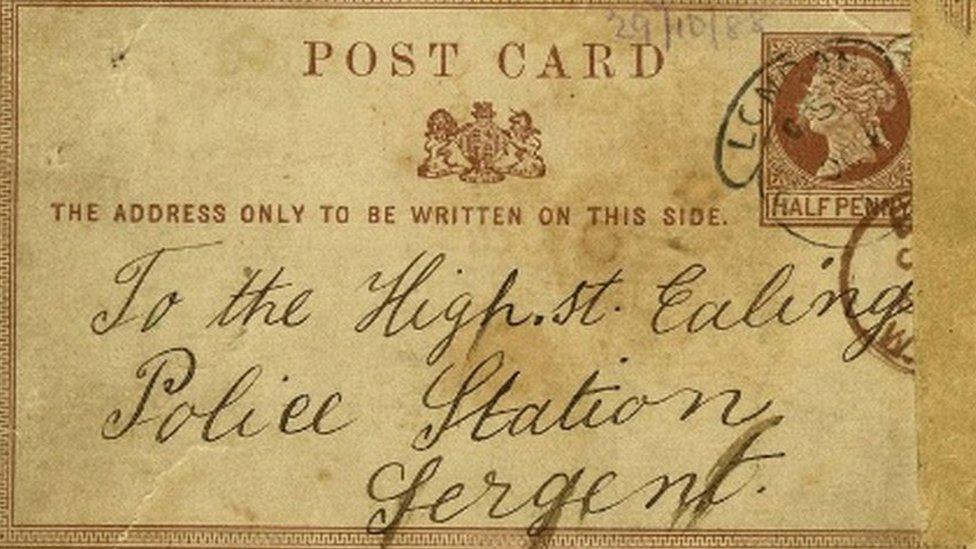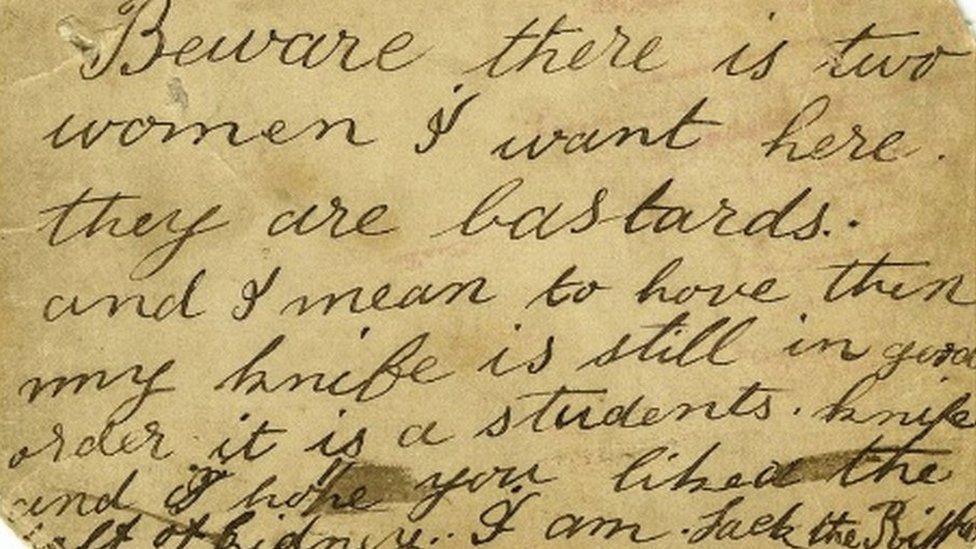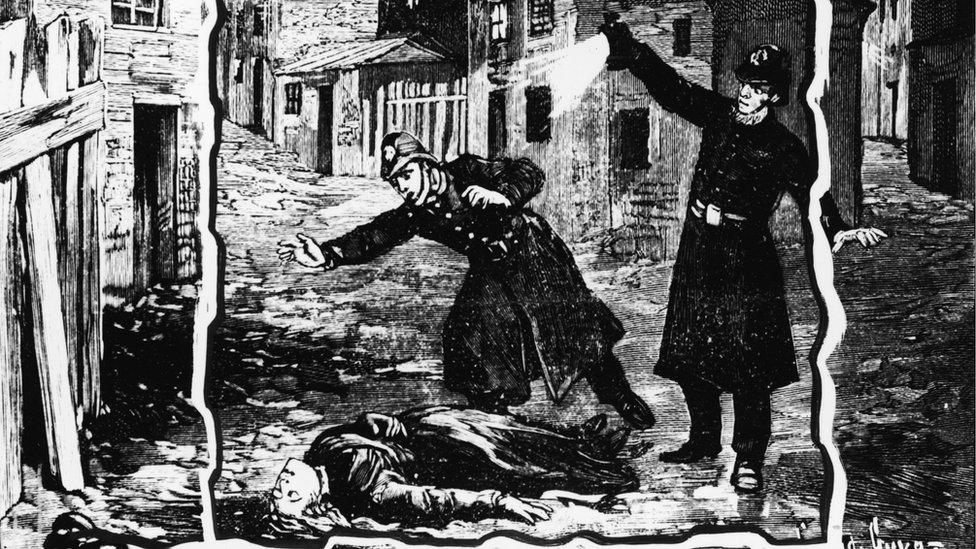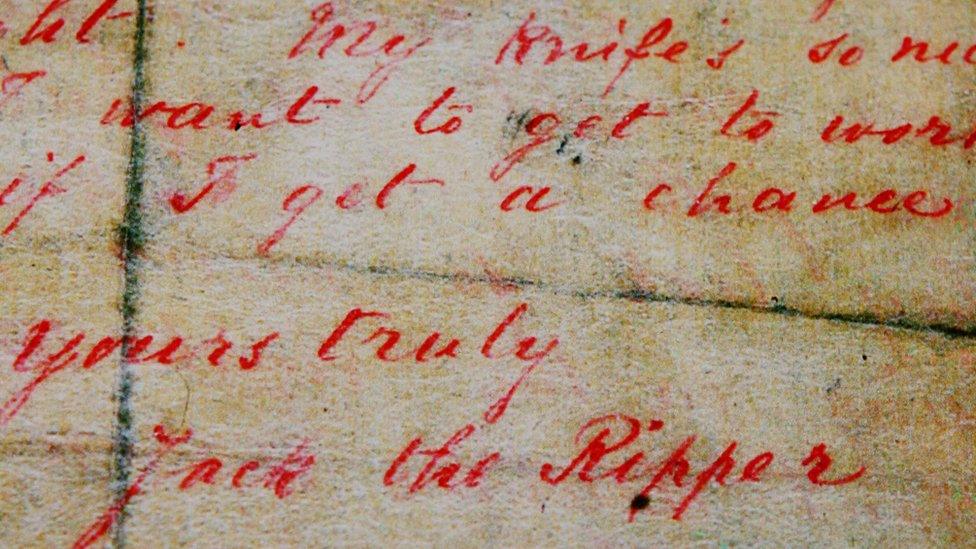Jack the Ripper postcard sold for £22,000 at auction
- Published

A postcard believed to have been sent by Jack the Ripper warning of two murders has been sold at auction.
The note, which was sent to Ealing police station, warns the killer's knife "is still in good order".
The card is dated 29 October 1888, which was 11 days before Mary Kelly - believed to be Jack the Ripper's final victim - was murdered on 9 November.
The 2.75-inch by 4.75-inch card, sold for £22,000.

The card once belonged to a Metropolitan Police constable who was given it when he retired from the force in 1966.
The card, which had an estimate of £600 to £900 prior to sale, states: "Beware there is two women I want here and I mean to have them my knife is still in good order it is a students knife and I hope you liked the kidney.
"I am Jack the Ripper."
Jonathan Riley of Grand Auctions in Folkestone, Kent, said a British private collector won a bidding war with an American for the rare letter, "the likes of which have never come up for sale before".
The final price will be closer to £30,000 once an auction premium is paid, Mr Riley said, adding the sale shows "how much interest in the Ripper there still is".
The card once belonged to a Metropolitan Police constable who was given it as a memento when he retired from the force in 1966. It was sold by his widow.
The auctioneers state: "There is mention of his 'students' knife in our card. Some believe that the ripper had some medical training from the way he cut up his victims, but this is not universally accepted.
"The kidney that was mentioned also appears in the 'Letter from Hell', another Ripper letter, where the writer stated he had fried one of his victim's kidneys and 'it tasted nice'.
"The card is definitely of the period and has police provenance."

Attacks ascribed to Jack the Ripper typically involved female prostitutes who lived and worked in the slums of the East End of London
Jack the Ripper's murders remain the most notorious unsolved mystery in British criminal history.
Between August and November 1888 he murdered five women in the Whitechapel area of east London.
Dozens of letters signed "Jack the Ripper" were sent at the time, but many were - and still are - regarded as hoaxes.
Speculation about his identity was rife at the time and remains so to this day.
- Published1 February 2018
